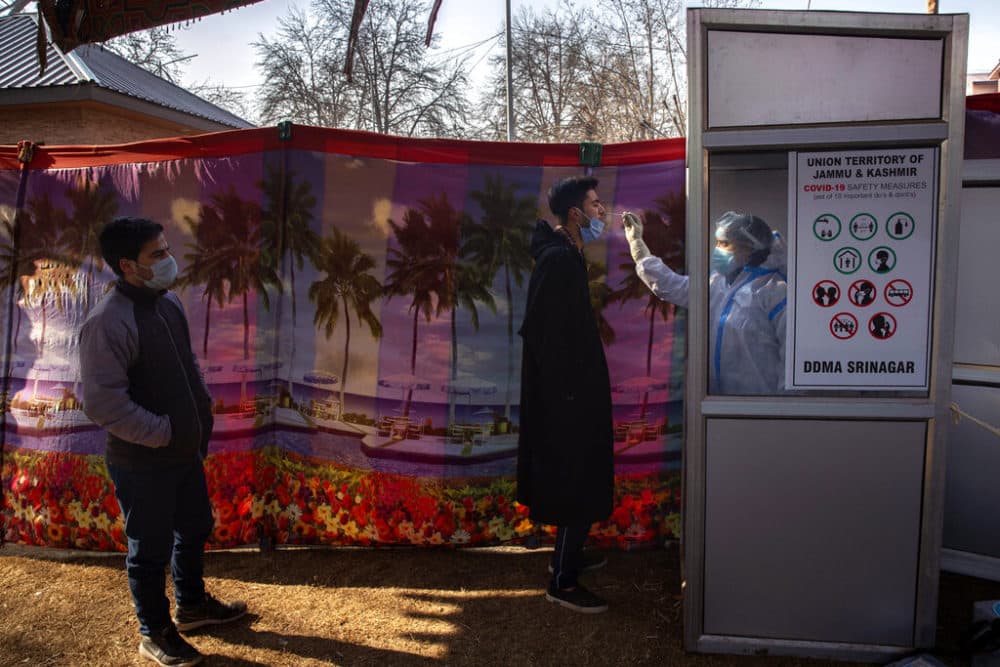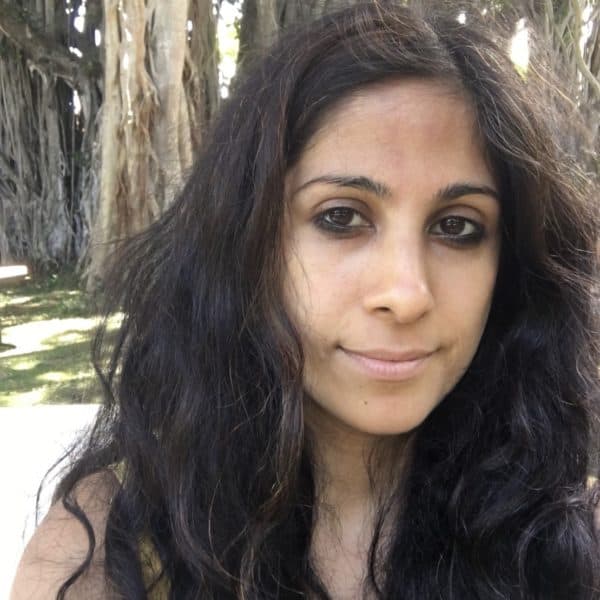Advertisement
Commentary
We All Have COVID Until None Of Us Has COVID

In one of my earliest memories, my mother takes me to the doctor on a rickshaw. We trudge up the stairs to Dr. Satwant Singh’s one-room clinic and wait patiently on a wooden bench. Next to us sit a line of men in plain kurta pajamas and women in drab saris, local and poor, more or less like us.
Dr. Singh calls us behind the curtain that separates the waiting area from his desk. He places his stethoscope solemnly upon my chest, his index finger poised upon it and listening, his eyes shut. My mother's eyes brim, her words falter. She waits with bated breath for the doctor's pronouncement.
Dr. Singh scribbles on a cheap writing pad. My prescription is always the same, no matter the cause — I am given an unmarked vial of blood-red liquid decorated with a white strip of paper cut into a series of hexagons.
Did Dr. Singh's medicine work? I cannot be sure, but my mother believed. Dr. Singh had gone to the same med school as my uncles. We held on to Dr. Singh’s vials and poured our faith into them. That is all we had in India in abundance: religion. Seeing Dr. Satwant Singh was my mother’s idea of a religious experience, and over the years, it became mine.
Did Dr. Singh's medicine work? I cannot be sure, but my mother believed.
India’s COVID-19 crisis has made it clear that people’s communal faith is the miracle holding together India’s health care scaffolding. The schoolroom village clinics and the one-room urban clinics resemble a housing project that continuously runs out of funding and forever looks like a bamboo skeleton. We, the common people of India, put our faith into its unfinished floors, hope that world-class facilities would one day materialize out of thin air. But faith has a bad habit of running out. While we believed in Dr. Singh’s vials, we weren’t blind to the fact that if something really bad happened, his tonics wouldn’t save us. His one-room dispensary didn't have the same resources as the multi-story hospitals where my uncles performed open-heart surgeries. We lived on a prayer that nothing worse than what Dr. Singh could cure happened to us.
But of course, something worse did happen.
A few years ago, on a trip to Sarnath, India, a small town where the Buddha delivered his first sermon, my mother developed a painful kidney stone. The co-inhabitants of our ashram — farmers, masons, artisans, philosophers — awoke in the wee hours and carried my mother on a rickshaw to the nearest hospital, a state-run facility. After hours of waiting, the pain meds were finally administered, and the stone passed. The worst was over, we thought, but a few months later, my mother developed an acute urinary tract infection. We'd returned to Boston by then, and because the case had gone undetected for months, one of my mother’s kidneys had become so severely infected, she couldn’t eat or drink, and had to be taken to the emergency room at Beth Israel hospital. What if we’d been back in India? I wonder if my mother would have survived.
Advertisement
But it wasn’t just the doctors who held the scaffolding together: It was all of us.
The U.S. healthcare system has its own problems. But America has a bare-minimum safety net that India lacks, and living without a safety net is scary and depressing. What kept us alive in India was our faith in the health care scaffolding held together by the miracles of the friendly neighborhood doctors like Satwant Singh who operate out of one-room dispensaries and charge no more than a hundred rupees to those who can afford to pay, and nothing at all to those who cannot.
But it wasn’t just the doctors who held the scaffolding together: It was all of us.
In the pre-liberalized India of the '80s, other than the handful of rich, we all had more or less the same things. As a teenager growing up in a suburb outside Bombay, I became aware of my absolute averageness. I had what the average girls had — lice and pollution-induced asthma. There were no private miracle cures, only the communal cures of combing and distancing and our collective inability to afford cars. We all had lice until none of us had lice. COVID-19, especially with the new variant in India, should be looked at in this way: We all have it until not one of us does.
The pandemic has reminded us how our communal behavior affects others. We masked for strangers, skirted long arcs around wheel-chaired elders. We learned how to extend our sphere of worry beyond ourselves. The thought of other peoples' sickness kept us awake.
The situation in India right now is grim and heartbreaking. Many of my friends have lost and are still losing family members. People in their 20s have died trying to save their parents. What can we do? we ask them, and they tell us to donate money and well, pray. My mother and I do both as often as we can, paycheck after paycheck.
We can’t help but wonder: What if we were back in India? Without a doubt, we’d be sitting inside Dr. Singh's dispensary, hoping he had obtained an oxygen cylinder by some miracle. But likely, the good doctor would have succumbed first, trying to save us all.
